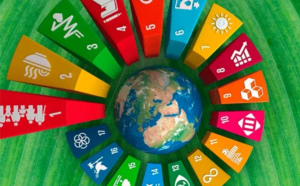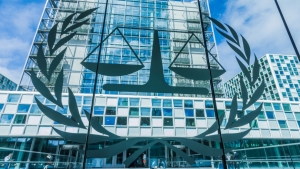Claims to customary status of international human rights norms are rarely followed by a well-founded justification of such status. Often scholars, human rights activists, lawyers, and judges, especially in international adjudicatory bodies, describe human rights norms as custom without providing the necessary evidence of state practice and opinio juris to back their claims, instead frequently only relying on another body’s or person’s claim, often also unsupported. This practice, even if nobly aiming at advancing human rights, can, firstly, be misleading to those relying on a verified customary status of a human rights norm; secondly, challenge the credibility of the constitutive elements of customary international law, i.e., state practice and opinio juris; and thirdly, it can also challenge the credibility of customary law itself as a source of law. Overall, the fundamental work of assessing state practice and opinio juris is lacking in the international uses of and discussions on human rights as customs. William Schabas’s new book, The Customary International Law of Human Rights, thus comes as a very useful resource, with high practical value, to tackle this issue of unsubstantiated claims to customary status.
While acknowledging the complexity and difficulty of the task of gathering evidence to prove or disprove customary status (as the requirements for the formation of customs can still be contentious and as the interpretation of state practice and opinio juris may point either way) the book provides a rather careful and comprehensive analysis of elements of state practice and opinio juris for a wide range of international human rights. While, of course, not exhaustive, the thoroughly researched compilation of acts, declarations, documents, scholarly positionings, that may inform state practice or opinio juris fills a significant gap in international human rights law and scholarship. The evidence gathered from Schabas’s investigation is a ground-breaking practical resource for those seeking to make a claim of customary status, either in scholarship, litigation and law-making processes, enabling them to follow Schabas’s brief and nuanced conclusions, which, as the author acknowledges, reject a binary approach and can be contested, or build their own substantiated idea on customary status. As such, the book may contribute to strengthen the authority and credibility of claims of customary status (or jus cogens, or erga omnes, as the author also considers) for human rights. Finally, recognizing the dynamic nature of customary law, the author contemplates a second edition that would reassess the status of human rights norms as customs, especially those now said to be “crystalizing”. Something to look forward to reading.
One particularly useful aspect of Schabas’s findings are his conclusions on the customary status of Indigenous peoples’ rights. While Schabas acknowledges that the brief conclusions he draws at the end of each section are subtle and indicational and can be the object of contrasting opinions, some of the conclusions referring to Indigenous peoples’ rights or general human rights applicable to Indigenous peoples reflect a landscape which may enable a formal understanding of customary status, but, in practice, shows a very different picture, hence deserving specific consideration.
Setting off the analyses of the elements in Schabas’s robust examination that relate to Indigenous peoples’ rights, two main themes stand out. First, the heightened relevance of customary law where very few states have ratified treaties prescribing rights to Indigenous peoples (for instance, as of February 2022, ILO 169, the single binding international instrument specifically dealing with Indigenous rights, has 24 parties, mostly from Latin America). That is, before the scarcity of international binding conventional instruments, where custom is identified Indigenous rights and claims may gain more power, since little can be expected (or judicially demanded) in practice from most states’ conventional international commitments. As to the second theme, there is a caveat: international customary law’s dependence on state practice (as the main international legal actor) highlights and prioritizes the will and behaviour of the state over Indigenous communities’ needs in considering the status of the rights of the latter (in other words, it is the state as the entity against whom the right is claimed, and not Indigenous peoples as the rights holders, who “count” for the purposes of assessing custom). Moreover, historically, even if now slowly improving, international law has not been developed taking Indigenous peoples’ best interests into account, which makes one wonder how that trend affects recognition of customary law.
On the first theme, the situation of Indigenous rights has considerably improved (even if still insufficiently) with the adoption of the United Nations Declaration on the Rights of Indigenous Peoples (UNDRIP) by the General Assembly (UNGA) in 2007. As a UNGA Resolution, however, the document is formally soft law, hence not binding. Further, it is not formally monitored by any permanent UN body, which hampers its direct judicial enforcement. While these features make the UNDRIP seem to lack teeth, Schabas relies heavily on the Universal Periodic Reviews (UPRs), and the consideration of states’ acknowledgment of their duties towards Indigenous peoples in such reviews as evidence of the emergence of new customary rules, to argue for the UNDRIP’s power to facilitate and advance the recognition of Indigenous customary human rights. Key Indigenous rights that Schabas indicates as part of a quickly evolving area of customary international law are the right to land, the protection of traditional economies, and the survival of Indigenous culture. Work from the International Law Association (ILA) committee on the Rights of Indigenous Peoples (2006-2012), specifically addressing the rights of Indigenous peoples under customary international law, corroborates Schabas’s conclusions. The committee’s report states that, as in 2012, the UNDRIP as a whole could not yet be considered to have customary status, but grants that several key provisions, similar to those affirmed by Schabas, do reflect customary international law.
Thus, formally, significant documents from international bodies and states’ UPR submissions do affirm a customary status (or at least serve as evidence of opinio juris) for some of the rights enshrined in the UNDRIP. Still, in practice, it is not so easy to identify consistent evidence of state practice endorsing such a conclusion or affirmation. One is left wondering whether a more general (that is, not single nor isolated) attitude of disrespect by states of these Indigenous peoples’ rights claimed to have become international custom would not, to some extent, undermine such claims, without necessarily rendering the evaluative exercise futile. It does not need to be about questioning the validity of customary law, but wondering whether the relevant international bodies have given due weight to actual state practice regarding the (Indigenous) human right whose customary status is assessed. In my view, still far from a solid recognition of customary status, these rights are indeed being increasingly discussed in international fora and are progressively gaining momentum. Hopefully a future edition of Schabas’s volume will bring more evidence of state practice and opinio juris in favour of the recognition of customary status for these rights.
International human rights courts, especially the Inter-American Court of Human Rights (IACtHR) and the African Court on Human and Peoples’ Rights, as regards Indigenous peoples, also contribute to reinforce or expand the possibility of customary status for Indigenous rights. Schabas also covers important developments in the IACtHR’s case law, mainly concerning the Court’s attempts to promote the recognition of the collective dimension of Indigenous rights, often regarding property, but also other rights, such as the recognition of a collective dimension of juridical personality. While international human rights law, more generally (or the states negotiating or considering ratifying its instruments), still seems far from a wide recognition of a collective dimension of several human rights (including the right to property), Schabas seems to highlight the decisions of these courts as hopeful incipient indications of change.
While other international regimes may also (partially and often insufficiently) work to protect some Indigenous rights, such as a right to protect cultural heritage, which can lean on cultural heritage law or intellectual property law for intangible cultural elements, the “crystallization” of an enforceable human rights customary norm recognizing Indigenous peoples’ collective property rights may substantially widen the possibilities for Indigenous international mobilization and adjudication involving the protection of their culture, and the recognition of other collective claims. Overall, as regards the first theme identified above, the rise of customary human rights for Indigenous peoples seems to have started, although still in its early stages with no concrete results (or very few, if we acknowledge a right to self-determination as customary and jus cogens – see below), leaving us again hoping that a future volume of Schabas’s work will bring news of materialization of those customary norms.
Now more on the second theme. Despite Schabas’s apparent optimism as regards the emergence of customary Indigenous rights, he acknowledges the significance of such an (eventual) emergence given the difficulty (nearing impossibility) of the development of treaty law directly concerning Indigenous rights. In my view, both difficulties associated with new conventional law, as well as the protracted “emergence” of Indigenous customary rights are embedded in the state-centric and sometimes still colonialist tendencies of international law and its key actors. Schabas provides telling examples of how international law has historically worked, or accepted and legitimated states’ means, to marginalize and objectify Indigenous and other minority groups. For instance, the exclusion of minority rights from the Universal Declaration of Human Rights can be attributed to settler states’ interest in avoiding a discourse against assimilation and hindering the creation of a new national identity. Much more recently following the adoption of the UNDRIP, key states (which initially did not, but eventually endorsed the Declaration) with significant Indigenous populations, such as the United States, Canada and New Zealand, have continuously undermined the UNDRIP’s legal significance, emphasizing its lack of binding power and reinforcing its recommendatory status. Against this background, Schabas concludes that peoples, including Indigenous peoples, have a customary right to self-determination, which is also a jus cogens right. Considering the promotion of self-determination in the two twin provisions at the beginning of both the International Covenant on Civil and Political Rights and on Economic, Social and Cultural Rights, and subsequent reaffirmation in other soft law international instruments and bodies, such as documents of the ILA, International Law Commission and the Inter-American Human Rights System, it does seem that formally, self-determination is a customary and jus cogens right for Indigenous peoples. However, when unpacking the right and assessing its practical application, it does not seem to currently configure “a general practice accepted as law”.
In fact, in the history of international law’s relationship with Indigenous peoples, from the legitimation of colonialist practices to the disregard for Indigenous voices and denial of spaces for Indigenous participation (not always, but often; the negotiations of UNDRIP being a notable exception), through the maintenance of Indigenous peoples as objects rather than subjects of international law, the regime has mostly worked to perpetuate states’ prevailing interests and the marginalization of Indigenous groups. Ultimately, while the recognition of customary status of key Indigenous rights could be a great contribution to Indigenous international adjudication and mobilization, it appears that some foundational changes are required in the international system before the crystallization of such customs takes place.
As Schabas acknowledges the difficulty in developing conventional law regarding Indigenous peoples, which I attribute to the reticence of states to abandon lingering colonialist intentions and to directly recognize more Indigenous powers stemming from self-determination, it becomes also difficult to expect a distinct, and more positive outcome, from a source of law that depends entirely on evidence of state practice and opinio juris to improve the status of Indigenous peoples’ rights. Still, Schabas’s comprehensive book shows that there is hope and that the growing international interest in some issues concerning Indigenous peoples may contribute to overcoming the difficulties from treaty-law-making, and feed into the emergence of customary norms protecting Indigenous rights. Beyond the specific realm of Indigenous rights, Schabas offers the readers an original investigative work that remediates some of the shallow, unfounded, claims of customary status made by diverse international bodies and scholars, and fills a gap in the field of customary international law by providing a comprehensive compilation of elements of state practice and opinio juris capable of preventing further superficial claims. It is a book with incredible practical value for anyone interested in the assessment of customary status of human rights norms, and for those seeking evidence to make a claim of such a status. Given the quality of Schabas’s examination and the dynamic nature of customary international law, further editions of Schabas’s volume are something for scholars, human rights activists, law students, lawyers, and judges alike to anticipate.






